On View
See How Beloved Children’s Illustrator Maurice Sendak Brought His ‘Wild’ Drawings to Life on the Stage in a New Exhibition
Sendak often drew on the Morgan's collection for inspiration in his theatrical works.
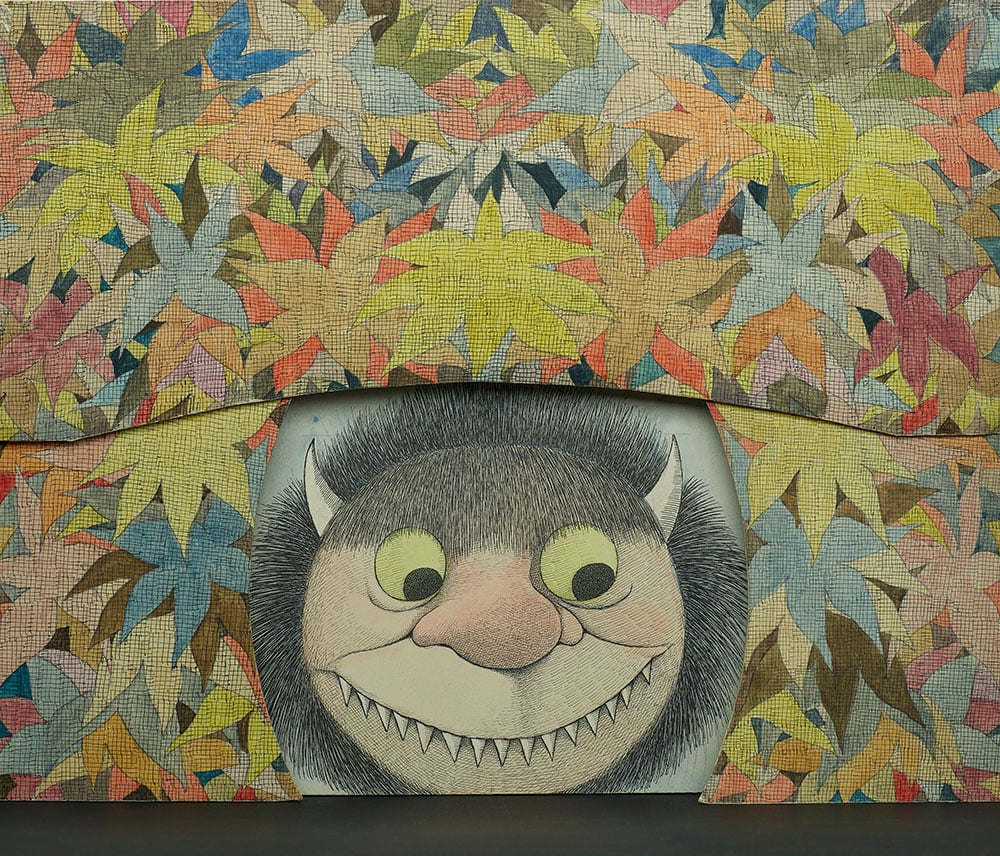
Sendak often drew on the Morgan's collection for inspiration in his theatrical works.

Sarah Cascone

Maurice Sendak is of course the renowned author and illustrator of children’s books such as Where the Wild Things Are (1963) and In the Night Kitchen (1970), but less well-known are his works for opera and ballet. Sendak, as we learn from a new show at New York’s Morgan Museum & Library, created the costumes and set designs for productions of The Magic Flute, The Nutcracker, and even an opera version of Where the Wild Things Are.
The museum acquired Sendak’s preliminary sketches, storyboards, watercolors, and painted dioramas for his theatrical productions after he died, in 2012.
“This exhibition introduces audiences to Sendak’s second career, as he referred his life in theater,” said Rachel Federman, an associate curator at the museum, during a press preview for the show, “Drawing the Curtain: Maurice Sendak’s Designs for Opera and Ballet.” “The Morgan was an incredibly special place for him. One of the great privileges we have here is the ability to display the original works that were inspiring him alongside his own.”
In the 1980s and ’90s, Sendak’s work with opera and ballet “allowed him to develop his passions for music and art history as never before,” Federman added.
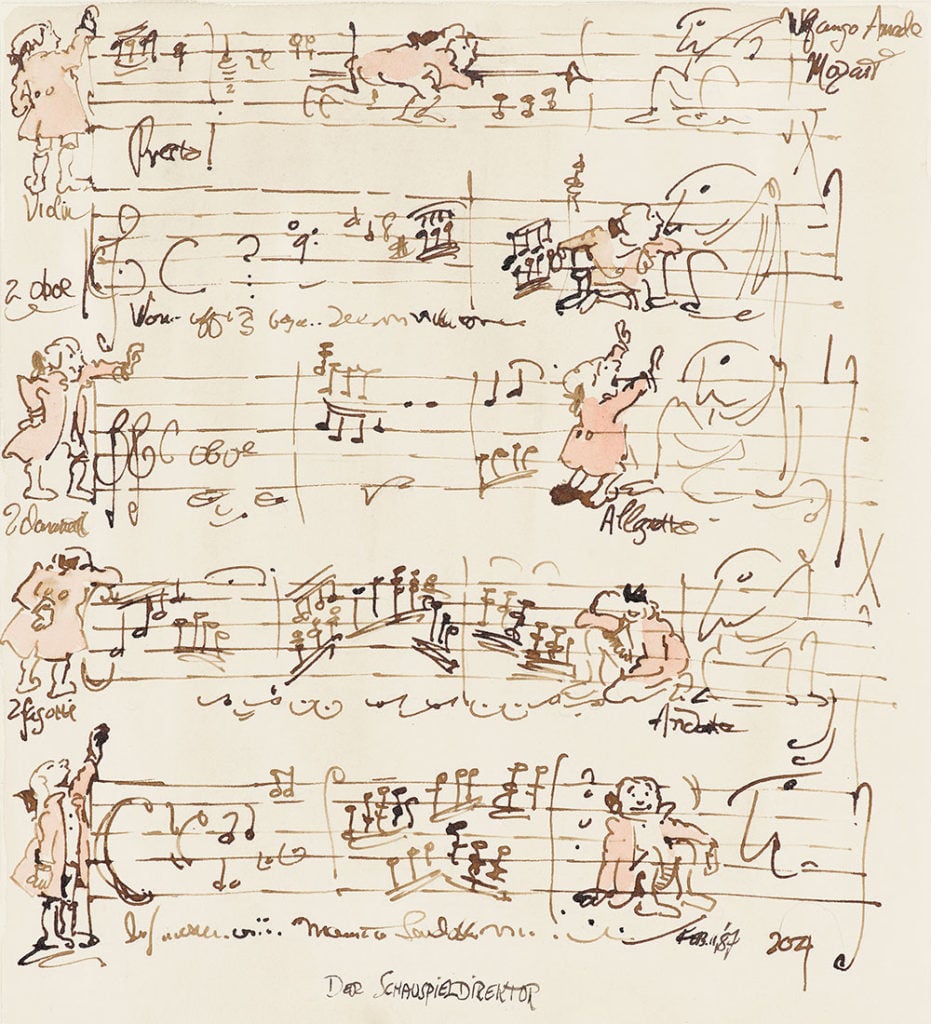
Maurice Sendak, Fantasy Sketch (Mozart, Der Schauspieldirektor) (1987). ©The Maurice Sendak Foundation. Photo by Graham Haber, digital image courtesy of the Morgan Library & Museum.
A lifelong admirer of Mozart, Sendak first ventured into world of theater with a design for a production of the composer’s The Magic Flute. Sendak’s vision for the show—which is being revived this November at the Kennedy Center in Washington, DC—was inspired in large part by the work of poet and artist William Blake, which the illustrator encountered at the Morgan in 1977.
Federman has cherry-picked examples from the collection that illuminate this connection. There’s also one of Sendak’s “fantasy sketches”—his attempt to animate a piece of music—that he drew while viewing a Mozart manuscript at the Morgan.
The trio has been paired together by the Morgan before, during one of three Sendak exhibitions held at the museum during his lifetime. That was in 1981, when preparatory drawings from Sendak’s The Magic Flute were the subject of a dedicated show at the Morgan alongside exhibitions for Blake and Mozart. At the time, the New York Times noted that the three artists “don’t look on paper as if they would work well together, but as it turns out they complement one another very well.”

Giovanni Domenico Tiepolo, Scene of Contemporary Life: The Chaperoned Visit (circa 1791). Photo by Steven H. Crossot, courtesy of the Thaw Collection, the Morgan Library & Museum.
Some of Sendak’s drawings in the current Morgan show include handwritten notes referencing specific works in the museum’s collection from which he was borrowing. (In addition to Blake, Sendak also was fond of father-and-son artists Giambattista and Domenico Tiepolo.) The show also includes loans of costumes and props that were used in some of Sendak’s productions, plus works borrowed from the Maurice Sendak Foundation, including intricate mechanical toys the artist made as a young man with his brother.
“They tried to sell them to FAO Schwartz,” said Federman. “The store decided they were not economically viable, but they offered Sendak a job as a window dresser.” (This proved a pivotal moment in Sendak’s career as it introduced him to his future editor, Ursula Nordstrom.) “These toys are an early indicator of how important it was for him to bring his images into motion,” the curator added.
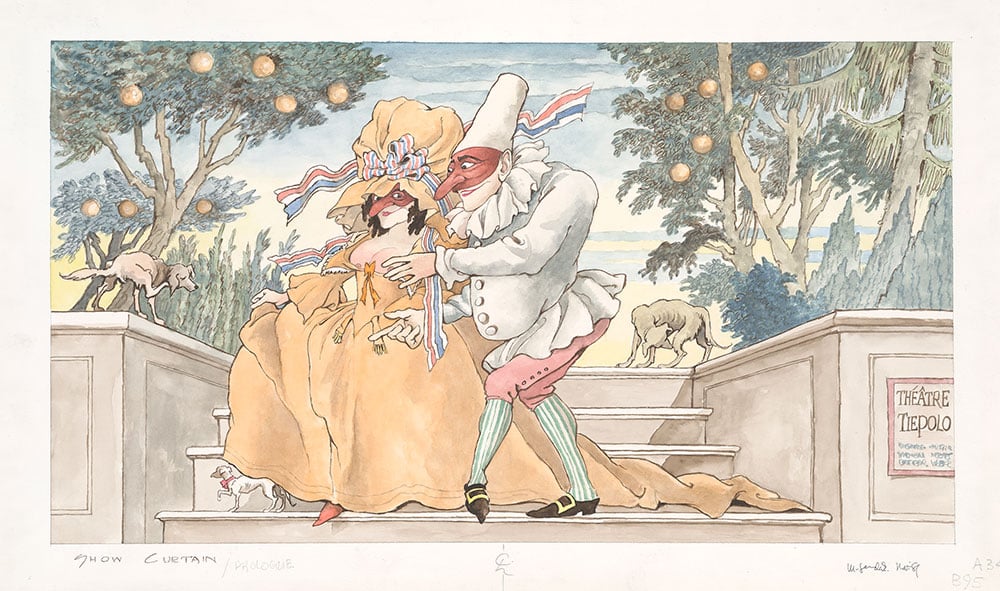
Maurice Sendak, design for show curtain for the opera The Love for Three Oranges (1981). ©The Maurice Sendak Foundation. Photo by Janny Chiu, courtesy of the Morgan Library & Museum, Bequest of Maurice Sendak, 2013.
But the star of the show are Sendak’s meticulous drawings, his unique storyboards—not typically used in the theater—and his incredible dioramas, which showcase his layered set designs. In addition to The Magic Flute, the exhibition highlights Sendak’s unique take on Pyotr Ilyich Tchaikovsky’s The Nutcracker, which revisits excised elements of the original 1816 story by E.T.A. Hoffman to draw out the ballet’s darker tones, as well as Leoš Janáček’s Cunning Little Vixen and Sergei Prokofiev’s Love for Three Oranges.
Sendak’s fans, of course, are likely to be especially taken with the incredible designs for the opera version of Where the Wild Things Are, from composer Oliver Knussen, first staged in 1980. (The Morgan will screen a performance of the opera, recorded in 1985, on June 28, at 7 p.m.)
The artist wrote the libretto and designed the sets and costumes, bringing his titular monsters to life through complex, 150-pound suits. Somehow, knowing that each character required three operators—a voice actor, a puppeteer inside, and someone off stage to work the eyes—only adds to the magic.
See more works from the show below.
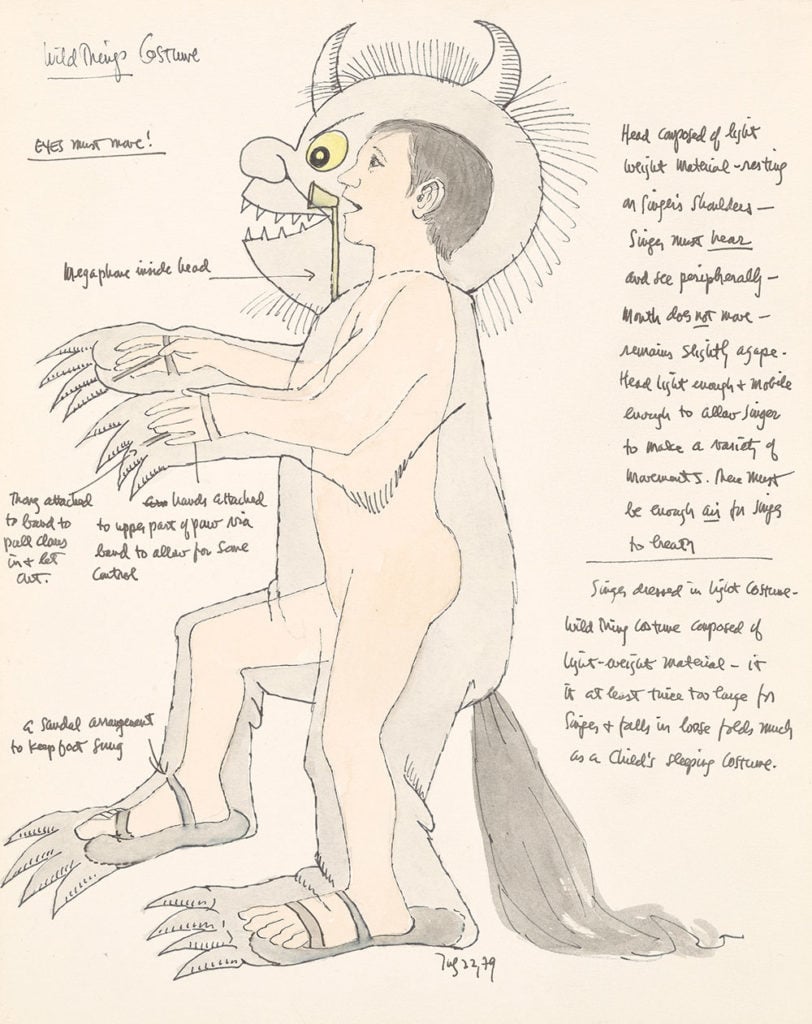
Maurice Sendak, study for Wild Things costume, with notes, for the opera Where the Wild Things Are (1979). © The Maurice Sendak Foundation. Photo by Janny Chiu, courtesy of the Morgan Library & Museum, bequest of Maurice Sendak, 2013.
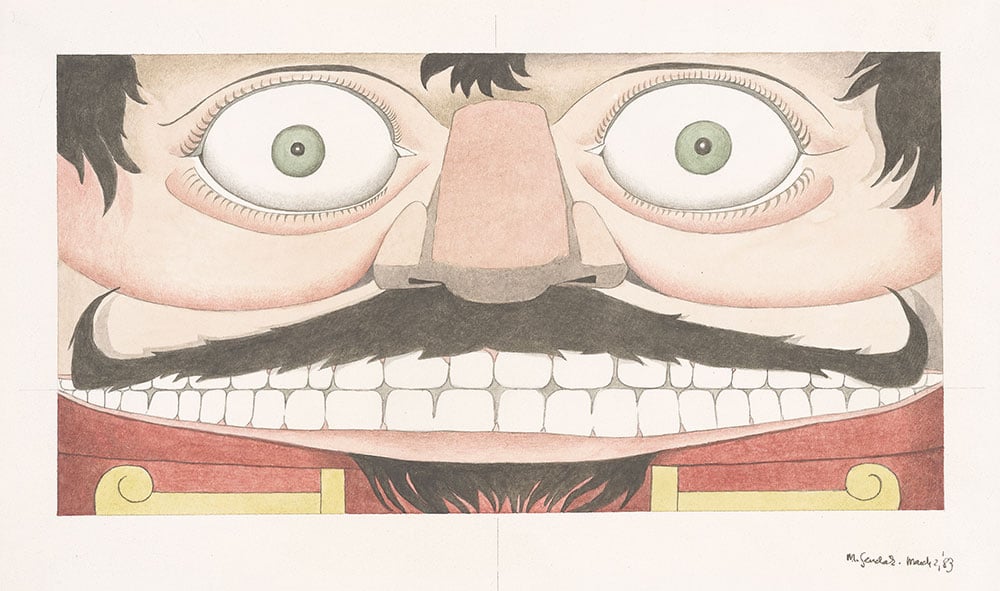
Maurice Sendak, design for show curtain for the ballet Nutcracker (1983). ©The Maurice Sendak Foundation. Photo by Janny Chiu, courtesy of the Morgan Library & Museum, bequest of Maurice Sendak, 2013.
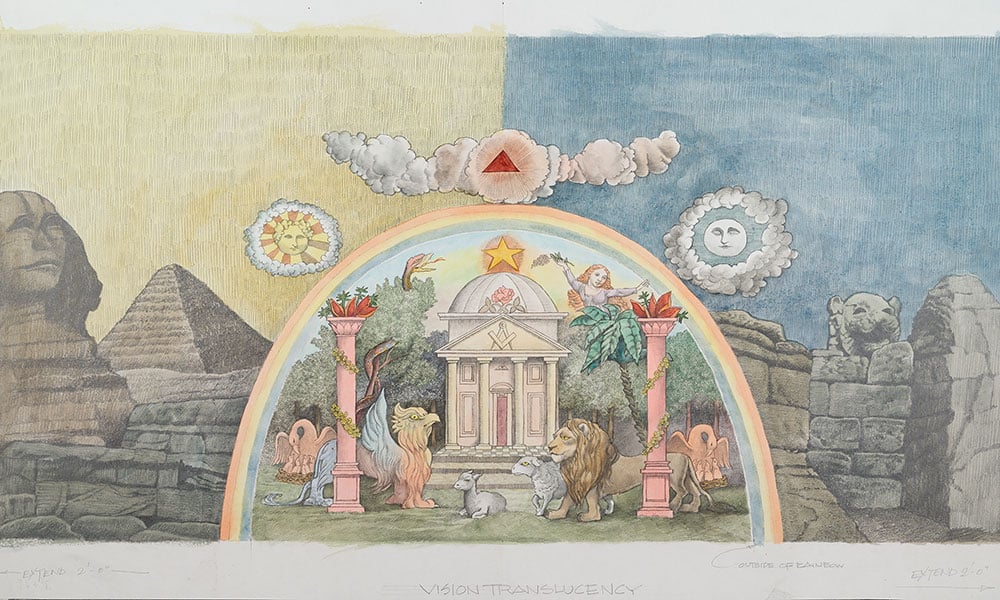
Maurice Sendak, design for Temple of the Sun, finale II for the opera The Magic Flute (1979–80). © The Maurice Sendak Foundation. Photo by Janny Chiu, courtesy of the Morgan Library & Museum, bequest of Maurice Sendak, 2013.
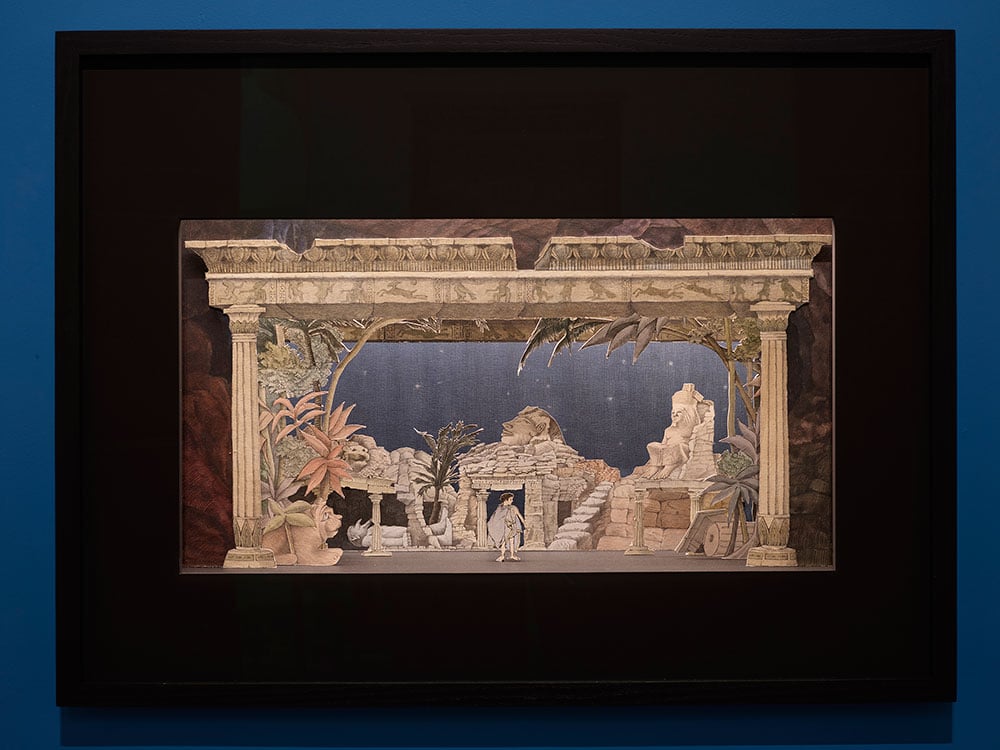
A Maurice Sendak diorama on view in “Drawing the Curtain: Maurice Sendak’s Designs for Opera and Ballet.” Photo courtesy of the Morgan Library.
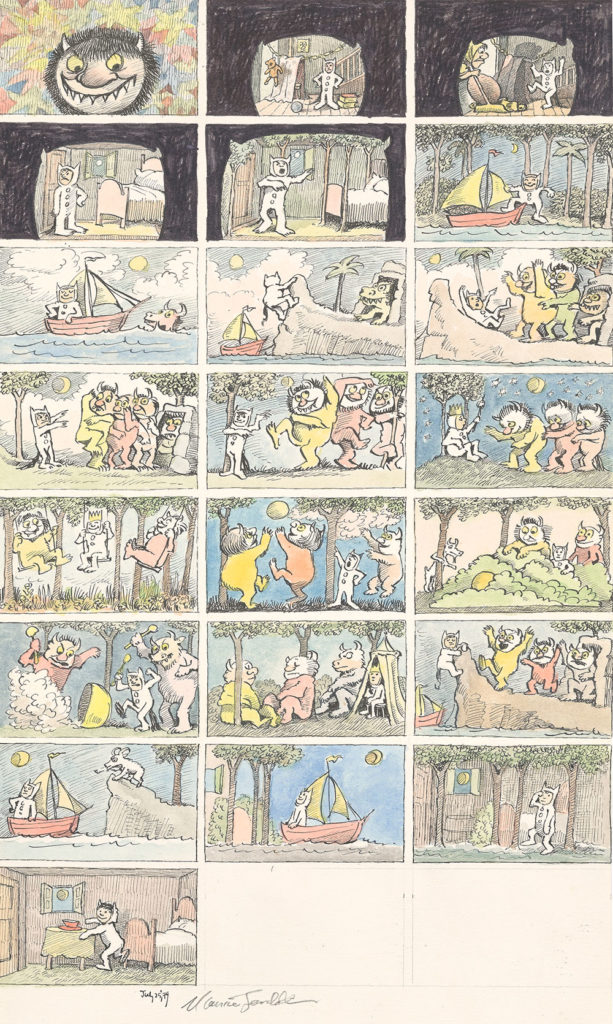
Maurice Sendak, storyboard for the opera Where the Wild Things Are (1979). © The Maurice Sendak Foundation. Photo by Janny Chiu, courtesy of the Morgan Library & Museum, bequest of Maurice Sendak, 2013.
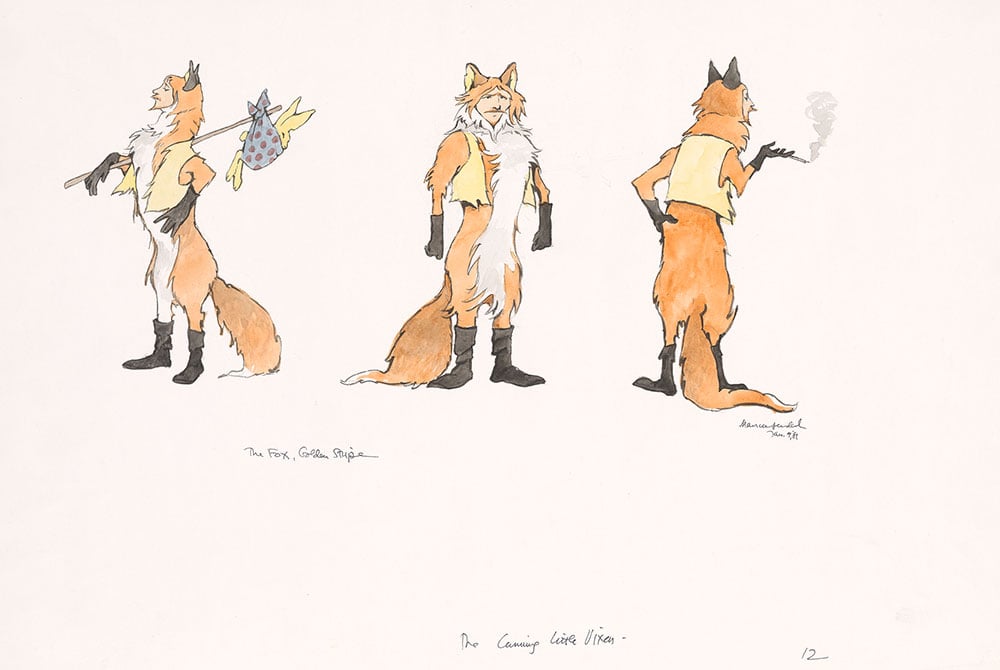
Maurice Sendak, costume study for Fox Golden-Stripe for the opera The Cunning Little Vixen (1981). © The Maurice Sendak Foundation. Photo by Janny Chiu, courtesy of the Morgan Library & Museum, bequest of Maurice Sendak, 2013.
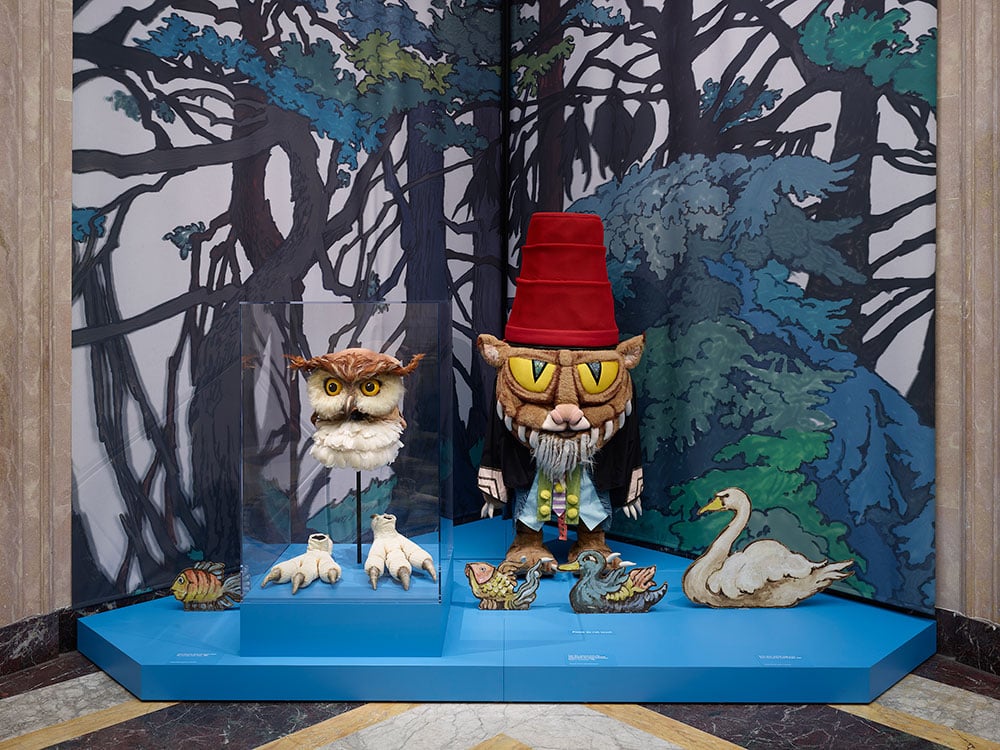
Maurice Sendak costumes and props on view in “Drawing the Curtain: Maurice Sendak’s Designs for Opera and Ballet.” Photo courtesy of the Morgan Library.
“Drawing the Curtain: Maurice Sendak’s Designs for Opera and Ballet” is on view at the Morgan Museum & Library, 225 Madison Avenue, New York, New York, June 14–October 6, 2019.